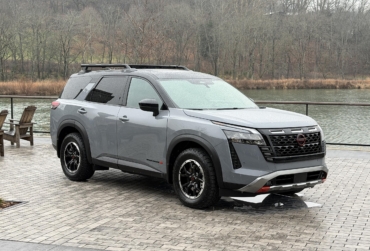Electric cars are becoming “normal,” and they’re heralded as a tool to fight climate change. However, do electric cars have a spotless reputation? No, and they aren’t for everyone, but EVs have come a long way since Nissan first introduced the Leaf 12 years ago.
Technology is moving fast, and what was once considered to be deal-breakers of electric car ownership aren’t the problems they once were. Still, there are plenty of rumors and misinformation that persist, muddying the realities of electric car ownership.
Statistically, fewer than three in 100 cars on the road are electric. But that is changing rapidly — 13% of new cars sold globally in 2022 were fully electric. The percentage of electric vehicles on the road is predicted to increase 10-fold by 2030.
The main reason why many drivers are reluctant to purchase an electric or hybrid electric vehicle is that they’re not clued in with the current state of the electric automotive industry. Let’s dive into some commonly touted disadvantages of EVs and review these claims to unearth what’s going on.
Charging Woes

It’s in their name, “electric” cars require electricity. No surprise there. What is surprising, however, is how poor the U.S. universal charging infrastructure is. This is one of the real disadvantages of electric cars today.
An EV road trip requires a network of strategically located charging stations. There are a rising number of “DC Fast-Charge” stations, especially on the West Coast, which can boost an EV to 80% charge in under an hour. Otherwise, recharging can take 3+ hours, so you’ll want to bring a book.
Tesla is the exception. Its infrastructure is years ahead of the competition, and it makes an EV road trip a real possibility. Tesla superchargers can add as many as 200 miles of range in less than 15 minutes. A Tesla Cannonball Run was completed in 2021 in just 42 hours and 17 minutes.
For now, the vast majority of drivers on the roads only drive to and from work or to run errands. It’s easy to charge your car at home overnight or outside your work without much impact on your lifestyle — besides spending less time and money at the gas pump.
If you’re an apartment dweller, it’s not so easy. Rentals in the city are hard to find with any parking, let alone parking with an electric outlet. England recently announced legislation that will require all new-built construction to feature electric charging — but that isn’t going to fix the millions of old housing units that don’t have the appropriate infrastructure. There are companies working to make home charging more accessible, like ConnectDer’s electrical panel connection.
The next three years will see a huge change in the national charging infrastructure. Momentum is building from automakers, the U.S. government (including the most recent Inflation Reduction Act), and NGOs pushing for convenient charging for all.
Further, the production of solid-state batteries may allow for much faster charging with longer battery life. But none of that helps the present situation, and for now, long journeys require patience and planning.
Traveling Distance (Range)

While my VW e-Golf can only manage 125 miles on a charge, the Lucid Air Dream Edition R was recently rated at 520 miles of EPA-certified road-tripping. At 70 mph, that’s a whopping 7-plus hours of seat time. Your bladder will likely give out before your electrons.
The Lucid is an expensive outlier. Mainstream EVs are hitting the 180-250 miles range. That’s enough to make many day trips easy, but you’re still limited by charging infrastructure.
It’s also essential to remember that your weather and driving habits can negatively impact your range. If it’s a cold, humid day, and you’re running heat and defrost while driving in the rain, you might watch your range drop by 20%. If you live in cold northern climates, budget for at least a 25% drop in the winter. Other common additions like roof racks and aftermarket tires and wheels can create a very noticeable drain on your range.
Range is no longer a deal-breaker. Sure, it won’t match gasoline for road trips yet, but the technology is improving day by day. In the not-so-distant future, when charging improves, 300 miles of range may be as much as the average driver needs. There’s no reason to carry expensive and heavy lithium packs when recharging becomes as fast as filling up at the pump.
Lack of Power

In the early days, electric cars were glorified golf carts. Even the first mainstream Nissan Leaf was lethargic. However, the introduction of the Tesla Roadster turned the idea that electric cars lacked power on its head.
Thanks to the use of brushless electric motors that can deliver unfettered power instantly and efficiently, acceleration is no problem for electric cars; in fact, some of the fastest cars in the world are electric.
Moving fast consumes a lot more battery, but the same can be said for gas cars. Because they don’t breathe air, EVs can even outperform at high altitudes (where the air is thinner), which is why they are so successful at events like the Pike’s Peak Hill Climb.
Battery Replacements Are Prohibitively Expensive

At the heart of all-electric automobiles are batteries — literally, the entire car is designed around them, and they’re the most expensive part of the car. It’s encouraging that all EVs sold in the U.S. come with an eight-year/100k mile warranty. While that sounds like a great deal, keep in mind that the average age for a vehicle on the road in the U.S. is 12.1 years.
At some point, the cost to replace the battery will be more than your vehicle might be worth — estimates range between $6,000 and $20,000, depending on the model.
Fortunately, this problem is already being tackled by aftermarket suppliers like EVs Enhanced in New Zealand. The original 40kWh Nissan Leaf battery packs were notoriously short-lived, but EVs Enhanced is offering a 70kWh pack that fits in the same space. That’s 175% of the original energy! Pricing is expected to fall in the $10K-$15K range, so it’s not cheap, but it’s a huge improvement, and prices will continue to fall as more vendors enter the EV rehabilitation market.
They Are Expensive

Electric does not mean equitable, and EVs are out of the price range of average citizens. There is no disputing this fact; electric vehicles are expensive — largely because of the battery — and a prohibitive entry price is one of the present-day disadvantages of electric cars.
Modern batteries require lithium, which can only be mined in a handful of countries. Once mined, producing thousands of small cylindrical cells — each of which must be carefully monitored — is not a trivial endeavor. Then you must add the cost of environmental and crash protection to prevent battery fires.
This forces automakers to start at a high price, which consequently means it will only appeal to upmarket buyers. That upscale demographic demands expensive luxury appointments, accounting for the $61,448 average sales price for an EV in 2022.
As you’ve probably heard, tax rebates are available as part of the Inflation Reduction Act. Some Americans could be looking at up to $15,000 in rebates between state and federal incentives, and there are even rebates for used EVs. Trickle-down and the economics of scale manufacturing will eventually bring costs down for the masses.
We’re still waiting for Kandi America to deliver on the cheapest electric car in America, but if they do, you might get a new ride for $5K.
EVs Cause Pollution and E-Waste

Yes, the “clean and green” electric cars cause pollution, too, albeit indirectly. While EVs have zero tailpipe emissions, the energy used to drive them is only as clean as the power plant that services you.
This has been a point of contention over the past decade, but the science behind vehicles’ “well-to-wheels” efficiency has matured — EVs are unequivocally greener. With modern electric cars, even if you are serviced by coal power, you are doing the earth a favor — and when the grid improves, so will your carbon footprint.
E-waste is a more insidious problem, and the industry is rapidly trying to find a solution for recycling used batteries. Lithium batteries are fairly benign when compared to Nickel-Cadmium cells or even other automotive compounds like brake fluid. Nonetheless, it’s considered toxic in our waste stream, and no one is prepared for the volume of used batteries headed to scrap yards. The EPA reported last year that at least 65 landfill fires were caused by lithium-ion battery waste. If the industry doesn’t find a solution quickly, we may have mountains of lithium trash waiting to catch fire.
They’re Big and Heavy

A Porsche that’s heavier than a Land Rover? A new electric Taycan has several hundred pounds on the green oval’s two-door Defender. Customers demand range — range means more battery, and batteries are not light. The battery in the new Hummer EV weighs nearly as much as a new Honda Civic.
Automakers have gotten good at hiding the weight by putting it low in the chassis, so handling is quite good. There’s no hiding the added momentum, however. You’ll want to calibrate your brake foot to start early. The battery is actually changing the shape of our vehicles, favoring long wheelbases that can fit a big slab of lithium energy.
Weight is a real problem as it leads to more tire and brake wear which impacts our health and our ecosystems.
Tradeoffs: Advantages and Disadvantages of Electric Cars
The prospect of electric vehicles is very promising, but they are not a silver bullet and have their share of shortcomings. Big automotive purchases are never simple, and the trade-offs are different for every individual.
If you’re driven by the need to make the world a better place, consider that it might be more environmentally sensible to keep your older vehicle well-maintained and running for years to come. Manufacturing a vehicle is highly carbon-intensive. When you look at the lifecycle carbon emissions of a vehicle, much of the cost to the planet happens during assembly. Every mile you wring out of your existing car defers making an environmentally costly replacement.
The longer you keep that old beast running, the fewer new cars will need to be produced, and that can have a bigger impact on your carbon footprint. When it is time to upgrade, give electric vehicles a test drive too. You might be stunned at how addictive instant torque can be!








